Originally posted at: http://www.nerdfitness.com/
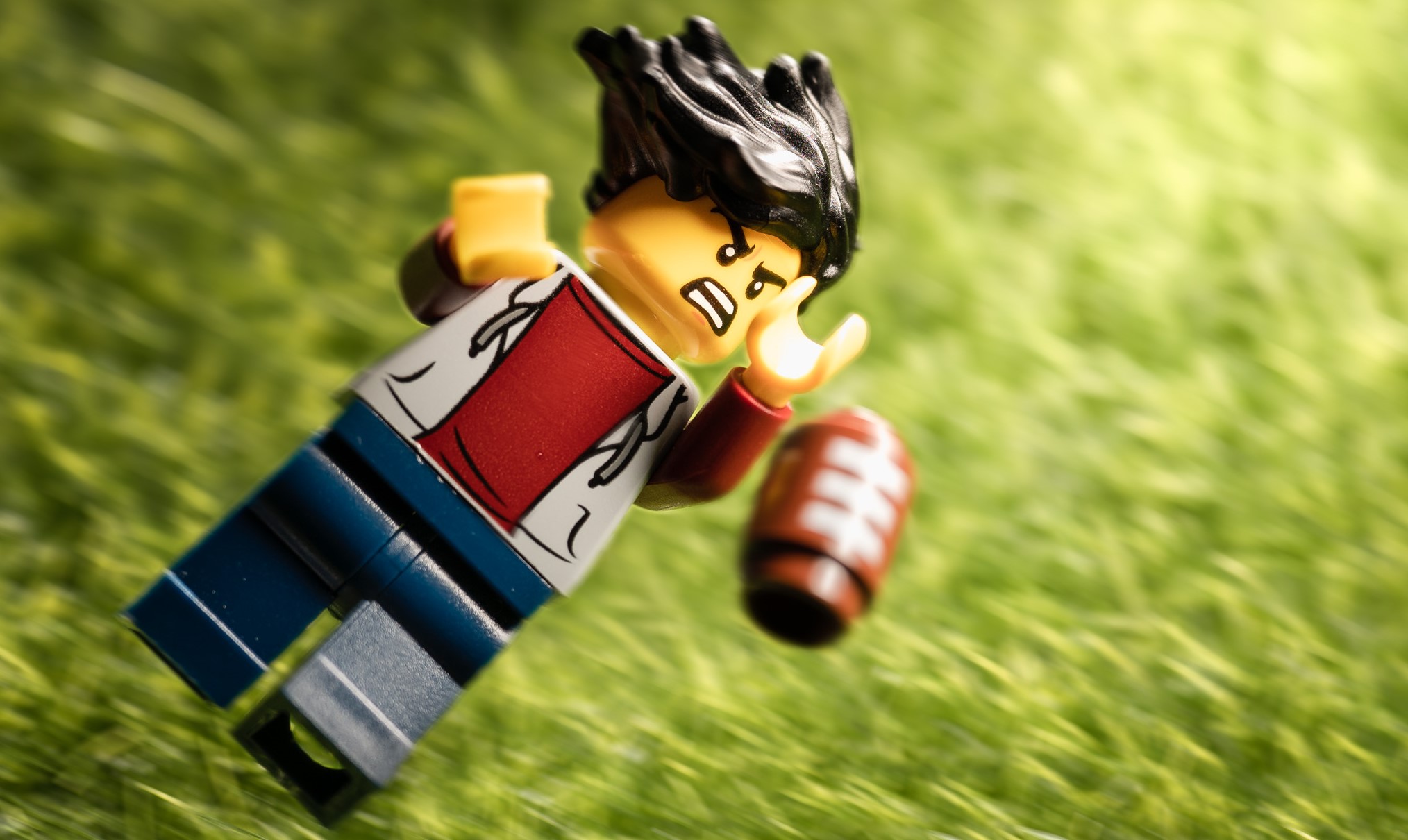
So you decided to start working out! Amazing!
Now you’re left with the inquiry: “How often should I work out?”
We answer questions just like this in our 1-on-1 Online Coaching Program, and today we’ll explore what we teach our clients:
Here’s what we’ll cover in today’s guide:
If you’re just starting your fitness journey, make sure you grab our guide Strength Training 101: Everything You Need To Know. It covers how to work out, when to train, and tips to keep progressing. Grab it for free when you join the Rebellion (that’s us!) by enlisting below:
- Everything you need to know about getting strong.
- Workout routines for bodyweight AND weight training.
- How to find the right gym and train properly in one.
How Often Should I Work Out
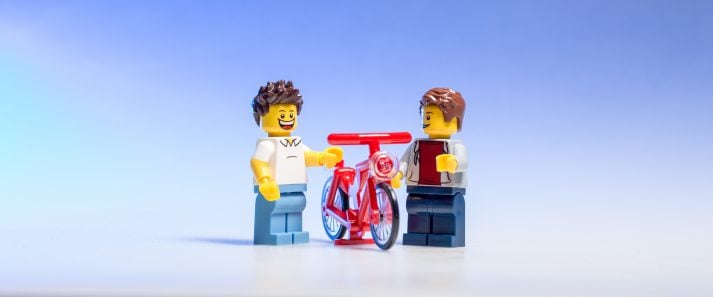
We get the question “How often should I work out?” quite a bit, usually from overeager beavers who decide they are going to go from “sitting on the couch watching The Office on repeat” to “exercising 7 days per week.”
I would advise something different.
I mean you can still watch The Office, but you don’t need to be training 7 days a week!

Why? We often see newbies burning out quickly and falling back to square one.
Instead, focus on building proper habits and set a goal of 2-3 full-body workouts per week.
For starters, your muscles don’t get built in the gym.
They actually get broken down in the gym, and then get rebuilt stronger while you’re resting…watching The Office.
By giving your muscles 48 hours to recover between workouts, especially when training heavy, you’ll stay injury-free and get stronger.[1]
What’s a full-body workout look like?
Great question! I knew you were smart.
We’re going to make sure we train the following areas:
- Quads (front of your legs).
- Butt and hamstrings (back of your legs).
- Chest, shoulders, and triceps: (“push” muscles).
- Back, biceps, and grip ( “pull” muscles).
- Core (abdominals and lower back).
We’ll start with bodyweight exercises (where you lift your own body’s weight), as that’s where our coaching clients often begin.
Here’s a sample full-body bodyweight workout for you:
Bodyweight Squats (Quads): 10 reps
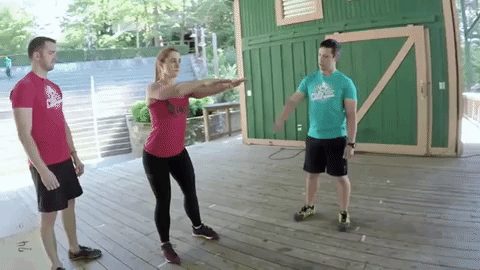
Hip Bridge (Butt and Hamstrings): 10 reps
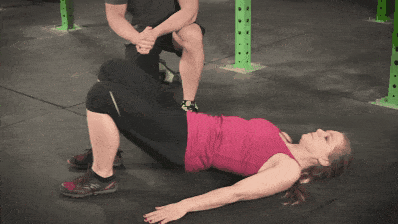
Push-ups (Chest, Shoulders, Triceps): 10 reps
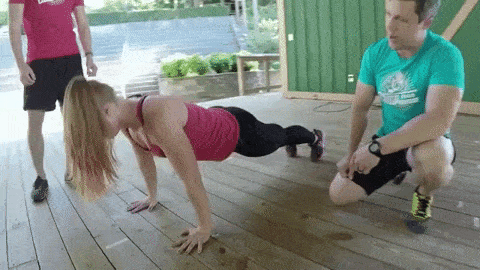
Inverted Bodyweight Row (Back and Biceps): 10 reps

Plank (Core): Hold for 60 seconds
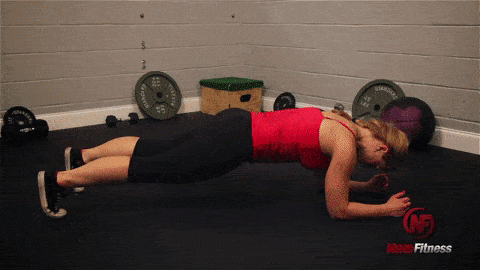
Again, aim to do such a workout about 2-3 times a week.
A Monday-Wednesday-Friday workout routine works well to ensure enough time to recover, especially when you are just getting started.
If you want to do Tuesday-Thursday-Saturday, or Sunday-Tuesday-Thursday, great.
Personally, I stuck with a Monday-Wednesday-Friday full-body routine for nearly 10 years and just focused on getting stronger with each movement.
These days, I train on Monday-Wednesday-Thursday-Saturday (my workouts on Wednesday and Thursday don’t work the same muscles!)
Do what works best for you!
If you want help building a different training routine, I’ve got two great options for you:
The first is our guide How to Build Your Own Workout Routine. It’ll walk you through creating a routine with bodyweight exercises or free weights, in case you want to train in a gym.
The second is the Nerd Fitness Coaching Program. Your coach will do all the heavy lifting for you (not really, you’ll still need to train) and create a workout specifically for your experience level, that will progress in difficulty as you get stronger.
Is It Okay to Work Out Every Day?

Let’s say you NEED to exercise every day.
No judgment, I like the enthusiasm!
While it’s very important to let muscles heal and recover from your training, a little exercise every day can be beneficial.
Personally, I know I am far less likely to eat poorly when I’m doing some active recovery than when I’m not doing anything deliberately. As we know, 80-90% of our fitness success will depend on how we eat.
To maintain momentum, “off days” shouldn’t become “cheat days.”
In other words, doing some exercise daily can help guide our forks in the right direction.

Plus, movement of any sort helps raise our Total Daily Energy Expenditure (TDEE), which is just a fancy term for how many calories you burn a day.
While strength training the same muscle groups again is off-limits (you need to heal), it doesn’t mean Netflix is your only choice.
You have two options to keep progressing while your muscles recover from your workout.
“Fun exercise” is any type of exercise that doesn’t feel like exercise.
Do you like walking? Or dancing? Or hiking?
Perfect. Do that.
Anything that you enjoy that raises your heart rate is a perfect fun exercise.
Your other option?
“Active recovery” is any gentle movement designed to help your muscles heal after training.[2]
Stretching, using a foam roller, and yoga can all help your muscles heal after an intense training session.[3].
The other thing you can do on your “off days”?

As we know, a healthy body is made in the kitchen, not in the gym.
It’s important to stay diligent with healthy nutrition even on days when you’re not actively working out.
One of the best ways to do that is to use one of your non-training days to prepare your meals for the week! NF Coach Staci Ardison does all of her meal prep for the week on Sundays, and looks at it like an activity that is furthering her fitness journey.
Interested?
Staci walks you through everything you need to start cooking for the week in our Guide to Meal Planning and Prep. Plus, here’s my exact recipe for batch cooking chicken:
Building the Habit of Working Out (Getting Started)

If you’re just starting your fitness journey, don’t stress too much about how often you are working out.
Three to four times a week may be ideal, but once a week is WAY better than none a week.
If you can do a full-body workout two to three times a week, awesome! You’ll be rocking and rolling on your fitness journey.
If you can only get yourself to train once a week, that’s okay! Let that become normal, then we can brainstorm ways to squeeze in an extra day.
Building the habit of working out is our goal today. We can worry about maximizing “gainz” down the road.
Don’t get me wrong, I’m all about maximizing gainz.
The most important thing you can do now: start. Try the workout sequence we laid out earlier.
Or give our Beginner Bodyweight Workout a try:
It’s designed for a newbie in mind and many a Rebel have used it to springboard their strength training. If you don’t know where to start, start there.
It’ll help you get going.
Want more tips for next steps? You seem like a nice person, so I’ll share with you my top suggestions:
1) If you want step-by-step guidance, a custom workout program that levels up as you get stronger, and a coach to keep you accountable, check out our killer 1-on-1 coaching program:
2) Good at following instructions? Check out our self-paced online course, the Nerd Fitness Academy.
The Academy has 20+ workouts for both bodyweight or weight training, a benchmark test to determine your starting workout, HD demonstrations of every movement, boss battles, meal plans, a questing system, and a supportive community.
3) Join the Rebellion! We need good people like you in our community, the Nerd Fitness Rebellion.
Sign up in the box below to enlist and get our guide, Strength Training 101: Everything You Need to Know. It’ll help you start incorporating a full-body workout into your training.
- Everything you need to know about getting strong.
- Workout routines for bodyweight AND weight training.
- How to find the right gym and train properly in one.
Alright, enough from me. Now it’s time to hear from you!
How often do you train and work out?
Do you do any type of “active recovery”?
What’s your goto “fun exercise”?
Let me know in the comments!
-Steve
PS: If you have more questions on how you should train, like when to work out and for how long, read our guide How to Build Your Own Workout Routine. It’ll give you everything you need to create the habit of working out.
###
Photo source: Football, Bicycle, Decathlon, Running.
GIF Source: Fork, Swedish Chef.
- A meta analysis found that 1 to 2 rest days between workout sessions was optimal for muscle repair, although they included a caveat that the intensity of the exercise would impact this: “A meta-analysis to determine the dose response for strength development.”(PubMed)
- Check out this study on active recovery and DOMS: “An Evidence-Based Approach for Choosing Post-exercise Recovery Techniques to Reduce Markers of Muscle Damage, Soreness, Fatigue, and Inflammation” (PubMed)
- Here’s a study on foam rolling helping muscle soreness and one on yoga too.
Filed under: Fitness


 For now classes are 6pm and 640pm at 2840 Wildwood st in the Boise Cloggers studio.
Book your class NOW!
click this ==>
For now classes are 6pm and 640pm at 2840 Wildwood st in the Boise Cloggers studio.
Book your class NOW!
click this ==>








